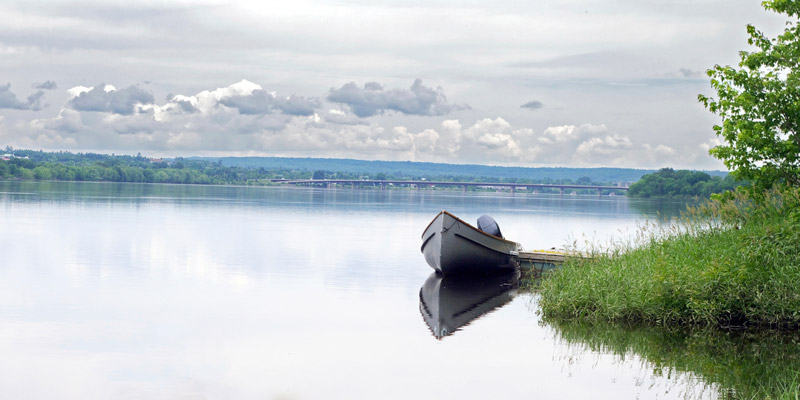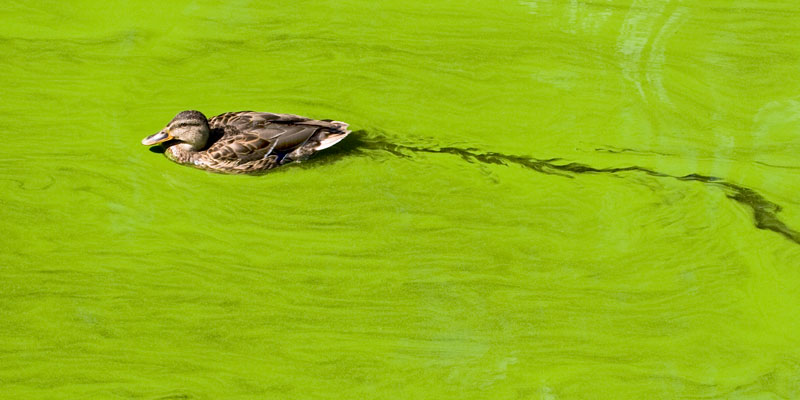Assessing the Impacts on Aquatic Organisms Exposed to Emerging Contaminants in Wastewater Discharges
Principal Investigator - Chris Metcalfe, Professor and Director, Institute for Watershed Science, Trent University, 2010 - 2013

Challenge
A potentially harmful category of previously unrecognized compounds in municipal wastewater effluent have begun to come under scrutiny. These compounds are collectively referred to as Emerging Substances of Concern (ESoCs) and include endocrine disruptors, pharmaceuticals, personal care products and nanomaterials. The impact of these compounds on the ecosystem and ultimately on human health is unknown, and there are few tools available that are relatively simple and rapid, yet sensitive enough to detect biological responses to trace levels of these contaminants. In addition, it is not yet known how rapidly aquatic organisms return to baseline conditions once exposure ceases.
The objectives of the project team led by Dr. Chris Metcalfe are to:
1) Develop simple, rapid and sensitive techniques for evaluating the ecological impact of these contaminants in receiving waters.
2) Contribute to research on the ecological impacts of these contaminants and inform policy and regulation aimed at reducing the impacts of municipal wastewater on aquatic ecosystems.
3) Promote dialogue among researchers and end-users to characterize exposure risks of emerging contaminants relative to other constituents in municipal wastewater.
Project
To assess the ecological impacts of ESoCs discharged into receiving waters, the project team has been monitoring and evaluating biological responses of key aquatic indicator species (i.e. fish, freshwater mussels) present downstream from municipal wastewater discharges in three watersheds (Grand River, Ontaro; St. Lawrence, Quebec; and North Saskatchewan, Alberta), and Lake 360 in the Experimental Lakes Area, Ontario.
To date this project has identified several biomarkers in freshwater mussels and fish (i.e. reduced immune function) that can be used as indicators of exposure to ESoCs in municipal wastewater. In addition, preliminary project findings show that two Darter fish species exposed to municipal wastewater discharges in the Grand River are highly susceptible to endocrine disruption. Disruption of the endocrine system can occur when chemicals mimic natural hormones. For example, estrogen mimics can turn on genes that produce egg proteins in male fish. Finally, studies conducted in Lake 360 at the Experimental Lakes Area reveal that after cessation of ethinylestradiol (a synthetic form of estrogen used in various hormonal contraceptives) dosing, fish recover from endocrine disruption and population failure within 2 years post-exposure. These latter results indicate that efforts to reduce levels of estrogens in wastewater will result in reduced biological impacts in exposed aquatic organisms.
Outputs
- The study team is currently developing web-based and printed materials for dissemination to end users that will provide guidance on monitoring of effects in organisms downstream of wastewater treatment plant discharges.
- Researchers conducted a workshop to present project outcomes at the March, 2013 joint meeting of the Canadian Association for Water Quality/Canadian Water and Wastewater Association in Hamilton, ON. This workshop was well attended and there was a lively discussion of the importance of the study results for decision making by municipalities
- Ontario Ministry of the Environment has requested that the team uses the techniques developed in this project to evaluate the responses in the Grand River to a planned upgrade to the wastewater treatment plant in the area.
- This project has resulted in scholarly journal publications
- Tetreault, G et al. (2011) Intersex and reproductive impairment oif wild fish exposed to multiple municipal wastewater discharges. Aquatic Toxicology 104:278-290.
- Gillis P et al. (2013) The impact of municipal wastewater effluents on field-deployed freshwater mussels in the Grand River (ON). Environ. Toxicol. Chem., accepted.
- This project has contributed to CWN workshop on Contaminants of Emerging Concern, Quebec City
Presentations and posters at several conferences, which include: SETAC Europe, 2013, SETAC Europe 2012, ASLO, 2013, CCFFR, 2013, CCEC annual workshop, 2012, CAWQ Conference, Burlington, 2012, SETAC Globe, Berlin, 2012, SETAC North America, Boston, 2011, American Water Research Association Conference on Contaminants of Emerging Concern, Denver, 2012
Outcomes
- Potential changes in practice (for municipalities) in relation to monitoring of downstream waters from wastewater treatment plants (WWTP)
- Increased knowledge in relation to the effects on organisms downstream from WWTP
- Inform policy and regulation aimed at reducing the impacts of municipal wastewater on aquatic ecosystems
- Promote dialogue among researchers and end-users to characterize exposure risks of emerging contaminants relative to other constituents in municipal wastewater




